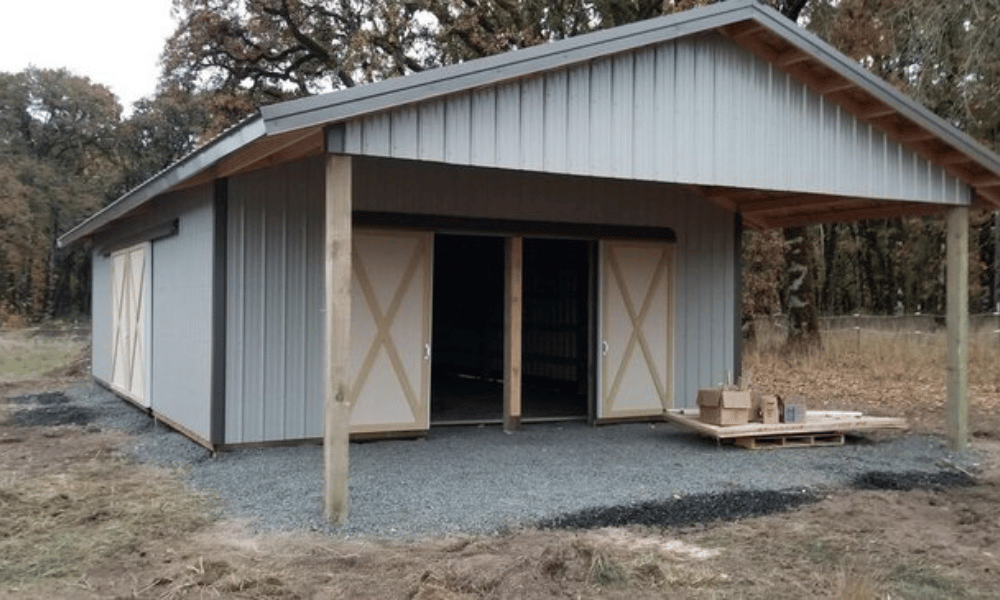Introduction: Building a Greener Future
Building a pole barn can be an exciting venture, whether you're looking to create a cozy workshop, a storage space for your equipment, or even a stylish residence. But in today’s eco-conscious world, it’s crucial to consider the environmental impact of your construction choices. When you're selecting materials and contractors for your pole barn, opting for eco-friendly options is not just a trend; it's a responsible choice that contributes to sustainable living.
In this article, we’ll explore everything you need to know about selecting eco-friendly materials with the right contractor for your pole barn. From understanding the benefits of sustainable building materials to choosing contractors who share your vision of environmental responsibility, we're here to guide you through the process.
Understanding Pole Barns: The Basics
What is a Pole Barn?
A pole barn is essentially an agricultural structure that uses posts (or poles) as the main support system. Unlike traditional buildings that use concrete footings or block foundations, pole barns have their vertical posts embedded deep into the ground. This design allows for flexibility in size and layout while also being cost-effective.
Why Choose Pole Barns?
Versatility: You can adapt pole barns for various uses—from storage facilities and garages to stables and even homes. Cost-Effective: The construction process is generally quicker and less expensive compared to traditional stick-built structures. Eco-Friendly Options: With the right materials and practices, you can construct an environmentally friendly building.Selecting Eco-Friendly Materials with the Right Contractor for Your Pole Barn
When you’re embarking on building your pole barn, one of the most significant decisions you'll face is selecting eco-friendly materials. Not only do these materials contribute to sustainability, but they also often provide better efficiency and longevity.
Dean Lindsey ConstructionIdentifying Sustainable Materials
1. Reclaimed Wood
Reclaimed wood has a history—it's been salvaged from old structures like barns or factories. Using reclaimed wood reduces waste and gives your barn character.
2. Bamboo
Bamboo is known as one of the fastest-growing plants on Earth! It’s incredibly strong and can be used for flooring, framing, or decorative elements.
3. Steel
Steel is recyclable and durable, making it an excellent choice for roofing or framing in pole barns. However, ensure you choose steel sourced from responsible manufacturers.
4. Insulation
Opting for recycled insulation material (like cellulose or denim) not only keeps your barn insulated but also minimizes waste.
Choosing Eco-Friendly Finishes
When it comes to finishes—paints, stains, sealants—look for those labeled as low-VOC (volatile organic compounds). These products are less harmful both during application and throughout their lifecycle.
Sustainable Roofing Options
The roof of your pole barn plays an essential role in energy efficiency:
- Metal Roofing: Durable and recyclable. Green Roofs: A living roof filled with vegetation can help with insulation while also providing ecological benefits.
Finding the Right Contractor
Importance of Hiring Eco-Conscious Contractors
Not all contractors are created equal when it comes to sustainability practices. An eco-conscious contractor will understand how to implement green building techniques effectively.
Questions to Ask Potential Contractors
Do you have experience working with eco-friendly materials? Can you provide references from previous projects focusing on sustainability? How do you ensure waste management during construction? Are you willing to collaborate on sourcing sustainable materials?Evaluating Experience in Eco-Friendly Projects
Look at their portfolio—have they completed projects using sustainable practices? If possible, visit one of their previous builds or speak with former clients about their experiences.
Cost Considerations
Initial Investment vs Long-Term Savings
While eco-friendly materials might come at a premium upfront, they often lead to savings down the road through lower energy costs and reduced maintenance needs.
Budgeting Wisely
Create a detailed budget that includes material costs as well as potential long-term savings associated with energy efficiency and durability.
The Construction Process: What to Expect
Planning Stages
Before construction starts:
- Develop clear blueprints that incorporate sustainable features. Obtain necessary permits while ensuring all regulations are met concerning eco-friendly practices.
Building Phases
During construction:
Site Preparation Material Delivery Frame Erection Installation of Eco-Friendly Features (like insulation and roofing)Maintaining Your Eco-Friendly Pole Barn
Regular Maintenance Tips
To ensure longevity:
- Routinely inspect structural integrity. Keep up with weatherproofing measures. Maintain drainage systems around your barn's foundation.
Sustainable Upgrades Over Time
Consider ongoing improvements such as adding solar panels or rainwater collection systems that enhance sustainability further down the line.
Frequently Asked Questions (FAQs)
1. What makes a material "eco-friendly"?
Eco-friendly materials are those that have minimal impact on the environment during their production, use, and disposal stages.
2. Are there financing options available for green building projects?
Yes! Many financial institutions offer loans specifically designed for green building projects which may include lower interest rates or incentives.
3. How do I find eco-conscious contractors in my area?
Online directories focusing on sustainable builders or local green building councils can be great resources!
4. Can I retrofit my existing pole barn with eco-friendly features?
Absolutely! Many upgrades can enhance energy efficiency without needing complete reconstruction.
5. Is it more expensive to build with eco-friendly materials?
While some green materials may carry higher initial costs, they often result in long-term savings through Learn here energy efficiency and reduced maintenance needs.
6. What should I prioritize first when planning my eco-friendly pole barn?
Start by determining your primary use case—this informs what features will be most beneficial in terms of sustainability!
Conclusion: The Green Path Forward
Taking steps toward constructing an eco-friendly pole barn isn't just about aesthetics; it's about laying down the groundwork for sustainability while enjoying all its benefits—from reduced environmental impact to cost savings over time! By selecting environmentally friendly materials coupled with hiring a contractor who shares this vision, you're not only creating a functional space but also contributing positively towards our planet's future!

So go ahead—make those selections wisely! After all, every small step counts towards making our world greener one pole barn at a time!